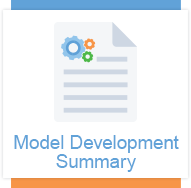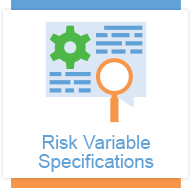Welcome to the webpage for the Anticoagulant-Related Bleeding Risk Prediction Model. This is a claims-based model developed from 3 years (2016–2018) of Medicare fee-for-service Parts A, B, and D claims. The model is a ready-to-use tool for stakeholders with access to large administrative claims databases, allowing them to identify individuals taking anticoagulants at high risk for bleeding.
On this webpage is a summary of the project, the model development methodology, and risk variable definitions. The data dictionary and the SAS programs for creating risk variables and scoring the bleeding risk are publicly available for download.
This project was funded by the Gordon and Betty Moore Foundation (Grant #8037). Health Services Advisory Group, Inc. (HSAG) was awarded this research grant in 2019 to develop a risk prediction model from administrative claims data to assess bleeding risk for patients taking anticoagulants. Our team has developed a multivariate prediction model to assess the 90-day risk of an anticoagulant-associated bleeding event severe enough to cause an acute care visit (emergency department visit, observation stay, or inpatient admission).
The Anticoagulant-Related Bleeding Risk Prediction Model is designed to be applied on administrative claims data to estimate the 90-day bleeding risk for a patient either starting or taking an outpatient anticoagulant (i.e., apixaban, dabigatran, edoxaban, rivaroxaban, warfarin, and injectable anticoagulant, excluding heparin lock flush).
The model produces the probability of having an acute care bleed (i.e., bleeding requiring an emergency department (ED) visit or an observation or inpatient stay in a hospital) in the next 3 months based on the patient’s risk factors presented in the prior 6 months.
The model was developed using 2016–2018 Medicare fee-for-service claims data. The model has not been validated externally in other populations and has not yet been submitted to a peer-reviewed journal.
Risk variables were operationalized using ICD-10-CM and ICD-10-PCS codes (versions 2016–2019). The risk variables in the model were operationalized by incorporating existing code sets produced by other organizations and referencing risk factors utilized in prior bleeding risk prediction schemes. Additional reviews and modifications were then made to adjust the ICD codes to capture the clinical concepts needed for the model. Given that the use of ICD-10-CM and ICD-10-PCS in the U.S. started in October 2015, validation studies of the codes using U.S. data were limited at the time of the risk variable development in 2020. The ICD codes for the risk variables will likely need to be adjusted in the future as validation studies of ICD-10-CM and ICD-10-PCS become more available, and incorporation of other types of administrative code, such as Current Procedural Terminology (CPT), may increase the accuracy of the risk variables.
What types of data are needed to use the model?
We strongly encourage users of the model to have at least the demographic information (i.e., age, sex, race) and medical claims (i.e., inpatient, outpatient, carrier claims) for their population.
The model was developed using the following research identifiable files of Medicare fee-for-service claims:
- Inpatient claims
- Outpatient claims
- Carrier claims
- Home health claims
- Hospice claims
- Skilled nursing facility claims
- Prescription drug event claims
- Master Beneficiary Summary File
For more details on these administrative research files and the data elements in each dataset, please refer to the technical guidance from the Chronic Conditions Data Warehouse (CCW) and the Research Data Assistance Center (ResDAC) website.
- CCW Analytic Guidance: Analytic Guidance - Chronic Conditions Data Warehouse (ccwdata.org)
- ResDAC Find the CMS Data File You Need: Find, Request and Use CMS Data | ResDAC
What analytic software is needed to use the model?
SAS programs for creating the risk variables and scoring the bleeding risk are available for download on the Model Software Download webpage. In addition, beta coefficients for the risk variables and the intercept are provided in the downloadable Risk Variable Data Dictionary. Any programming language, such as SAS, R, or Python, can be used to apply the model.
Does using the model require a license agreement?
Users do not need to obtain a license from HSAG to use the model. The data dictionary and the programming codes are publicly available without a cost. However, to utilize the full model, users will need to operationalize clinical risk variables defined in the International Classification of Diseases, Tenth Revision, Clinical Modification and Procedure Coding System (ICD-10-CM, ICD-10-PCS) and may need to identify medications using National Drug Codes (NDC) or other drug coding systems. In addition, the model adopted and adapted code sets developed by other organizations as noted in the Risk Variable Specifications page and the copyright tab of the data dictionary file in the downloadable package. Users may need to obtain licensed products to map the risk variable definitions to the administrative coding systems in their datasets or need permission to modify the code sets developed by other organizations.
Is there a fee to use the model?
Users do not need to pay a fee to HSAG for using the model. The data dictionary and the programming codes are publicly available without a cost.
Can the model be modified by users?
Yes, we encourage users to try applying the model to their data to test the model’s usability for their populations. Further refinements on the model are welcomed. We ask that users reference this webpage to credit the original model.





